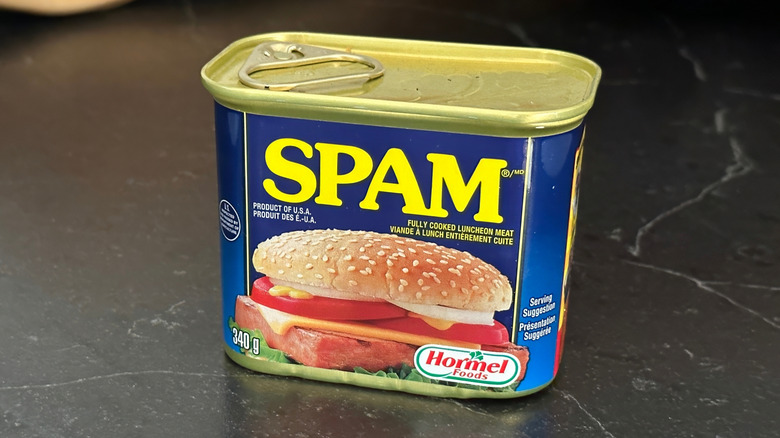How A War Made Spam Popular
Spam has always been a bit of a culinary enigma, sparking debates about its origins and role in American food history. While many believe its meteoric rise was a direct result of World War II, the truth is more nuanced. Spam debuted in 1937, two years before the war began, proving that its creation wasn't a reaction to global conflict. However, the war undeniably played a starring role in its ascent to fame, cementing its place in food culture.
During World War II, Spam became more than just a canned convenience — it was a logistical savior. Its long shelf life and compact design made it a perfect fit for feeding troops across the globe. Over 100 million pounds of the now-iconic meat were shipped to American and Allied forces. Though there have been some popular myths about Spam that tie its invention to the outbreak of the war, its pre-war origins demonstrate that it was a Depression-era innovation designed to meet a broader need. Soldiers may not have always loved it, but Spam became indispensable during the war effort.
Spam's influence wasn't confined to ration kits. As troops introduced it to countries like Britain, Japan, and Korea, it became part of local cuisines hit by postwar austerity, from Spam fritters in England to Korean "army stew." Its global reach, coupled with its unique backstory, all but ensures Spam won't find itself on the list of discontinued canned foods anytime soon.
From battlefield to breakfast table: Spam's post-war evolution
Spam's post-war story is one of reinvention. While many American soldiers grew weary of it after wartime diets, other parts of the world embraced Spam as a versatile staple. In Hawaii, Spam musubi — a twist on Japanese onigiri — became a go-to snack combining rice, nori, and seared Spam in a portable meal. In Korea, it starred in budae jjigae, or "army stew," a spicy dish blending canned meats with traditional flavors. These dishes highlight Spam's evolution from battlefield necessity to cultural mainstay.
Food processor Hormel also shifted gears post-war, rebranding Spam as a household staple. By the 1960s, it moved from a main dish to a supporting role in casseroles, eggs, and fried rice. A 2009 recipe tweak added potato starch, eliminating its quasi-notorious gelatin layer for a more appealing look. These changes helped Spam adapt to modern tastes while maintaining its classic identity.
Much like the love MSG received after World War II, Spam's global journey reflects how necessity shapes taste. Its ability to bridge economic needs and culinary creativity has made it a constant presence on shelves worldwide. Whether featured in nostalgic recipes or reimagined as a delicacy, Spam's adaptability ensures it remains relevant. From modest beginnings to global icon status, Spam's legacy as a kitchen chameleon continues to thrive.

